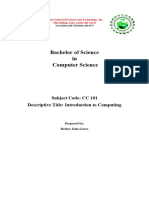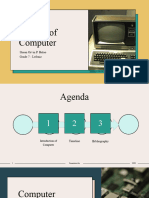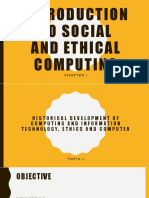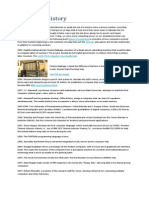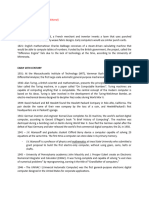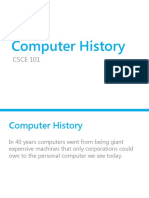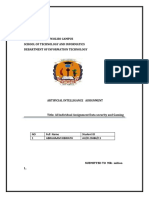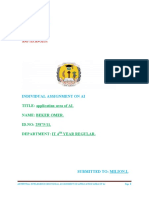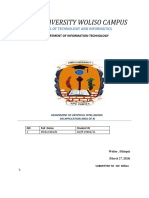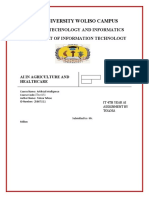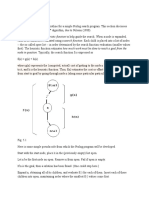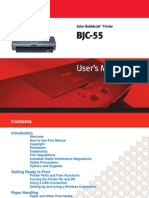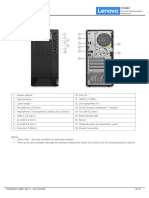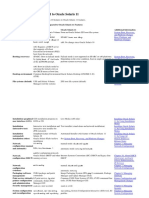0% found this document useful (0 votes)
44 views28 pages3610 Lecture1 History of Computing
This document provides a history of computing from ancient times through the modern era. It discusses the development of early counting tools, mechanical calculators in the 1500s-1800s, and the invention of the punched card and Boolean algebra in the 1800s which helped computing progress. The 1900s saw advancements like the vacuum tube, transistor, and Turing machine. The first general purpose computers were developed in the 1940s-1950s using vacuum tubes. Microprocessors were invented in the 1970s, leading to personal computers. The development of the Internet originated from packet switching and ARPANET in the 1960s-1970s. The World Wide Web was created in the 1980s-90s using HTML, HTTP, and web browsers
Uploaded by
Tolosa TafeseCopyright
© © All Rights Reserved
We take content rights seriously. If you suspect this is your content, claim it here.
Available Formats
Download as PPTX, PDF, TXT or read online on Scribd
0% found this document useful (0 votes)
44 views28 pages3610 Lecture1 History of Computing
This document provides a history of computing from ancient times through the modern era. It discusses the development of early counting tools, mechanical calculators in the 1500s-1800s, and the invention of the punched card and Boolean algebra in the 1800s which helped computing progress. The 1900s saw advancements like the vacuum tube, transistor, and Turing machine. The first general purpose computers were developed in the 1940s-1950s using vacuum tubes. Microprocessors were invented in the 1970s, leading to personal computers. The development of the Internet originated from packet switching and ARPANET in the 1960s-1970s. The World Wide Web was created in the 1980s-90s using HTML, HTTP, and web browsers
Uploaded by
Tolosa TafeseCopyright
© © All Rights Reserved
We take content rights seriously. If you suspect this is your content, claim it here.
Available Formats
Download as PPTX, PDF, TXT or read online on Scribd
/ 28






